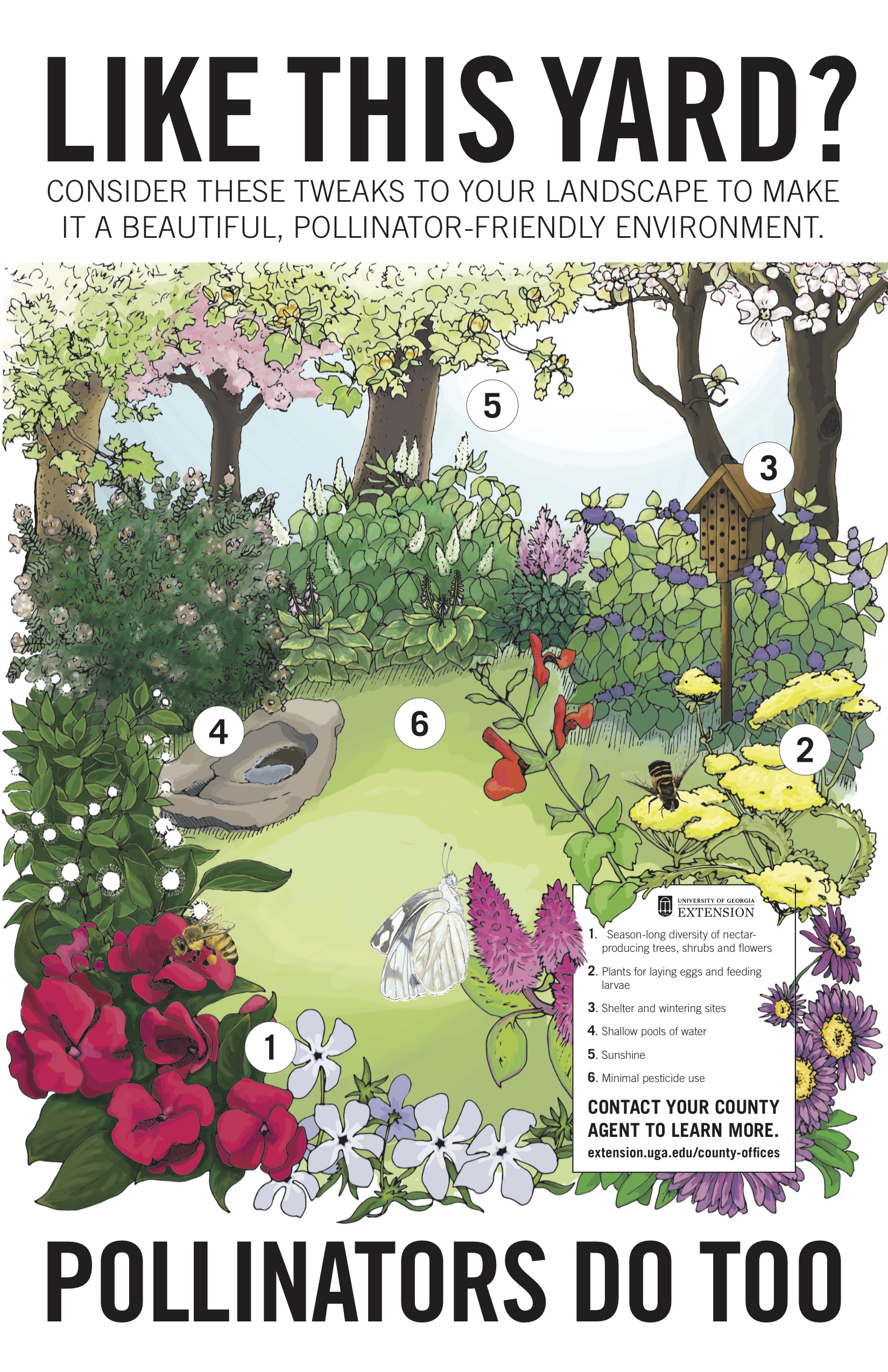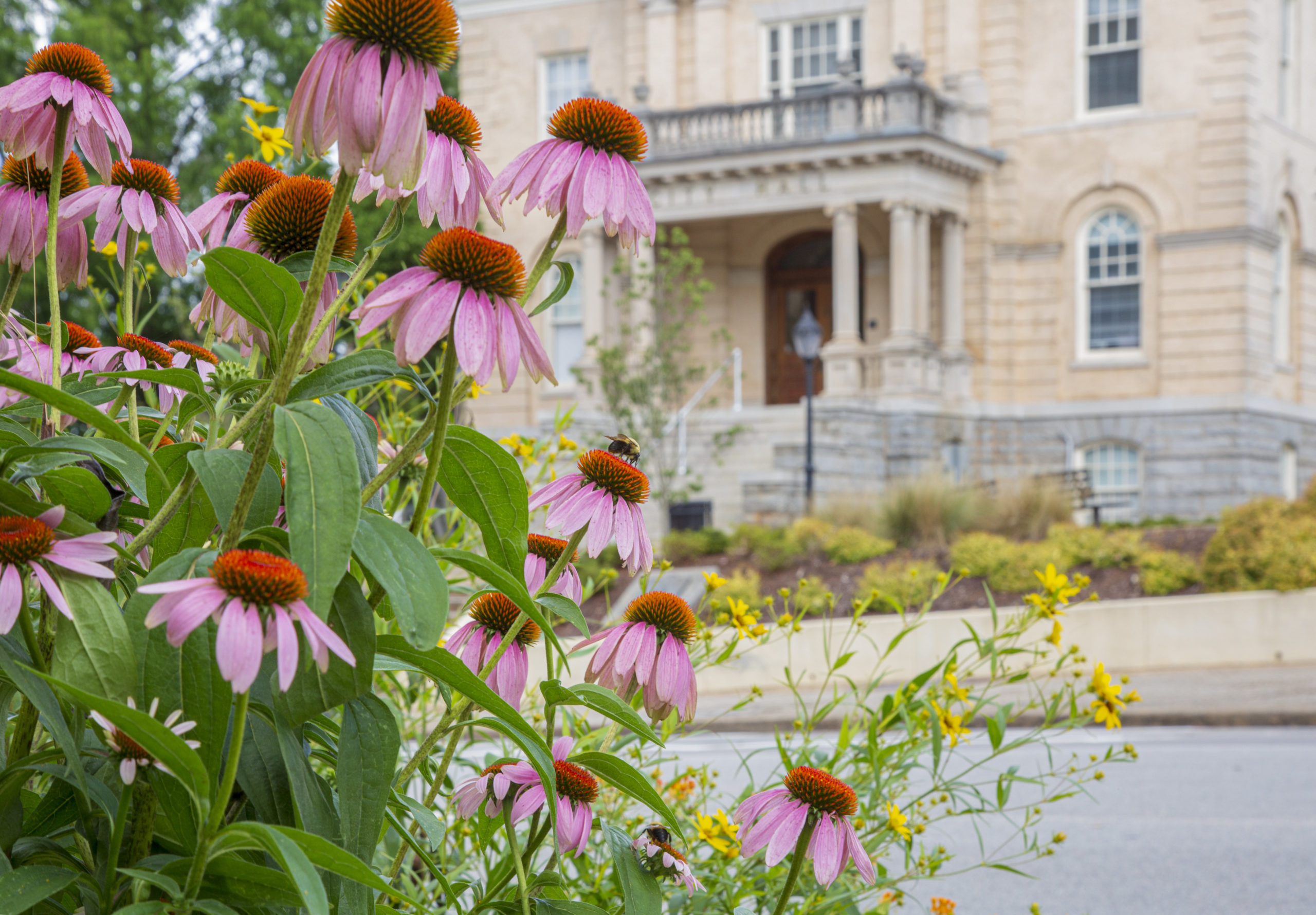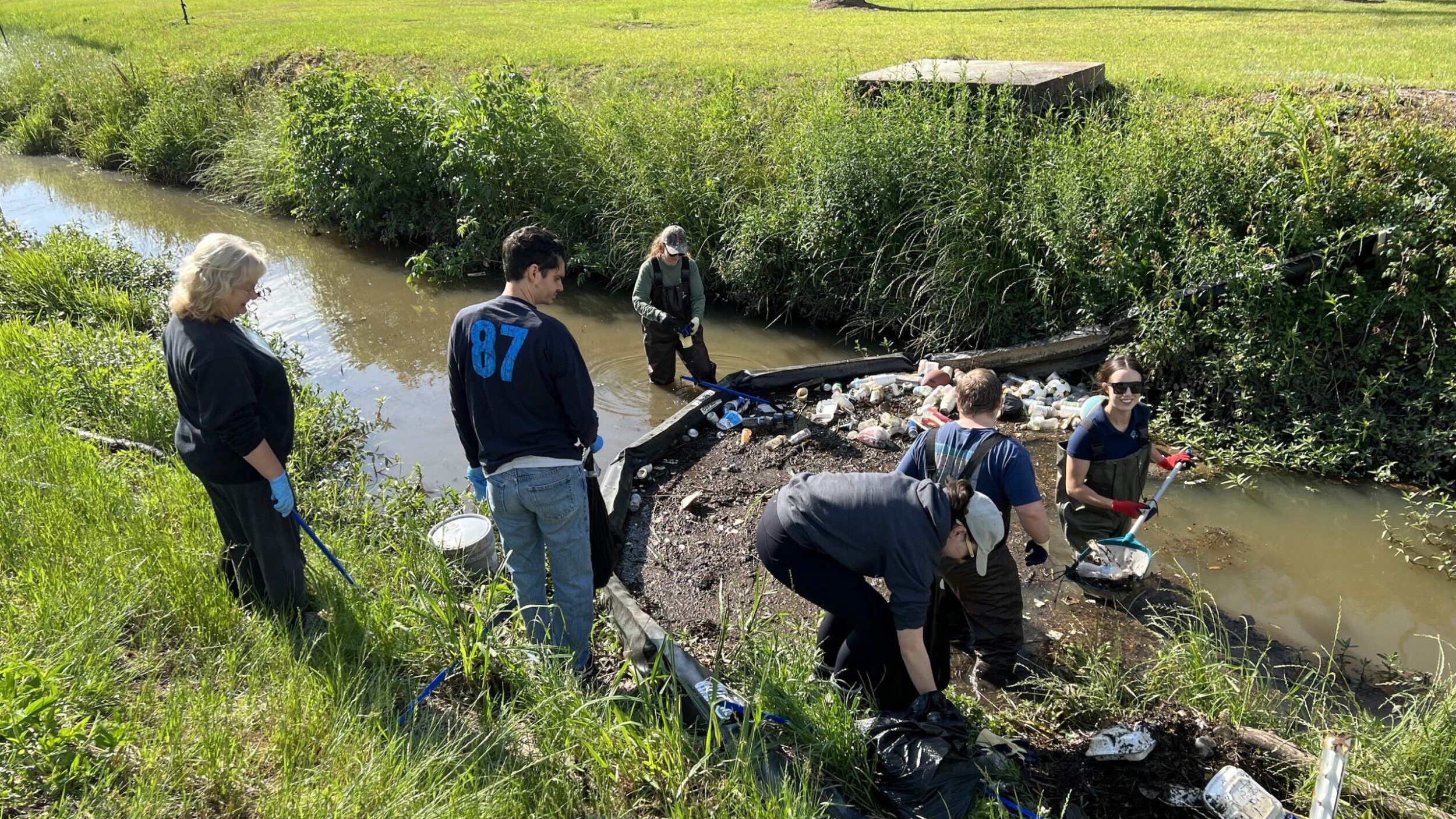Do you have seasonal allergies? Does the cloud of yellow seem to follow you wherever you go during the spring and early summer? You’re not alone. Seasonal allergies are a pain for humans but we also need that pollen to survive — we all eat plants and animals that rely on pollinators.
 In this activity, we will keep our pollinators in mind by practicing being a landscape designer using native plant species and pollinator-friendly elements! Use whatever art medium (drawing, painting, collage, etc.) you prefer to create your backyard or school garden design. You can come up with a design for any space regardless of where you live–urban gardening to backyard gardens to shaded woods and more!
In this activity, we will keep our pollinators in mind by practicing being a landscape designer using native plant species and pollinator-friendly elements! Use whatever art medium (drawing, painting, collage, etc.) you prefer to create your backyard or school garden design. You can come up with a design for any space regardless of where you live–urban gardening to backyard gardens to shaded woods and more!
And remember — lots of creatures can pollinators. We all know about bees and butterflies, but birds and bats are too! Anything that can brush up against plant pollen and spread it to another plant is a pollinator.

Follow these steps to create your design:
- Look at the shady/sunny areas where you live and make note if it’s in full sun, partial sun or shade throughout the day. If you decide to implement your design, check planting timelines for your region.
- Look at the soil or ground. You may need pots or raised beds for your design if you’re in an urban area or if you have very rocky soil. If you plan to use the ground for your design, check the soil-is it sandy/clay/soft dirt?
- Look up pollinator friendly plants based on your region.
So go eat some local honey to help with allergies and make those pollinators of all kinds happy and healthy!
Additional Resources: Upcoming event in ORK watershed!
Educator Workshop: Enhancing Your School Pollinator Garden
June 27-28, 2022, 8 am – 3 pm
$30/includes 1 year EEA Membership -or- Free for EEA Members
Activity is open to all ages and meets the needs or can be combined with other activities for the following Georgia Standards of Excellence: 4-6th Grade Science, Visual Arts. Activity can be adapted for older ages and still meet certain standards.
- VA4.CR.2 Create works of art based on selected themes.
- VA4.CR.3 Understand and apply media, techniques, processes, and concepts of two- dimensional art.
- VA4.CR.5 Demonstrate an understanding of the safe and appropriate use of materials, tools, and equipment for a variety of artistic processes.
- VA4.CN.2 Integrate information from other disciplines to enhance the understanding and production of works of art.
- VA5.CR.2 Create works of art based on selected themes.
- VA5.CR.3 Understand and apply media, techniques, processes, and concepts of two- dimensional art.
- VA5.CR.5 Demonstrate an understanding of the safe and appropriate use of materials, tools, and equipment for a variety of artistic processes.
- VA5.CN.2 Integrate information from other disciplines to enhance the understanding and production of works of art.
- VA5.CN.3 Develop life skills through the study and production of art (e.g. collaboration, creativity, critical thinking, communication).
- VA6.CR.2 Choose from a range of materials and/or methods of traditional and contemporary artistic practices to plan and create works of art.
- VA6.CR.3 Engage in an array of processes, media, techniques, and/or technology through experimentation, practice, and persistence.
- VA6.CN.2 Develop life skills through the study and production of art.
- VA6.CN.3 Utilize a variety of resources to understand how artistic learning extends beyond the walls of the classroom.
- S4E2. Obtain, evaluate, and communicate information to model the effects of the position and motion of the Earth and the moon in relation to the sun as observed from the Earth.
- S4E3. Obtain, evaluate, and communicate information to demonstrate the water cycle.
- S4E4. Obtain, evaluate, and communicate information to predict weather events and infer weather patterns using weather charts/maps and collected weather data.
- S4L1. Obtain, evaluate, and communicate information about the roles of organisms and the flow of energy within an ecosystem.
- S5L1. Obtain, evaluate, and communicate information to group organisms using scientific classification procedures.
- S5L3. Obtain, evaluate, and communicate information to compare and contrast the parts of plant and animal cells.
- S6E1. Obtain, evaluate, and communicate information about current scientific views of the universe and how those views evolved.
- S6E2. Obtain, evaluate, and communicate information about the effects of the relative positions of the sun, Earth, and moon.
- S6E3. Obtain, evaluate, and communicate information to recognize the significant role of water in Earth processes.
- S6E4. Obtain, evaluate, and communicate information about how the sun, land, and water affect climate and weather.
